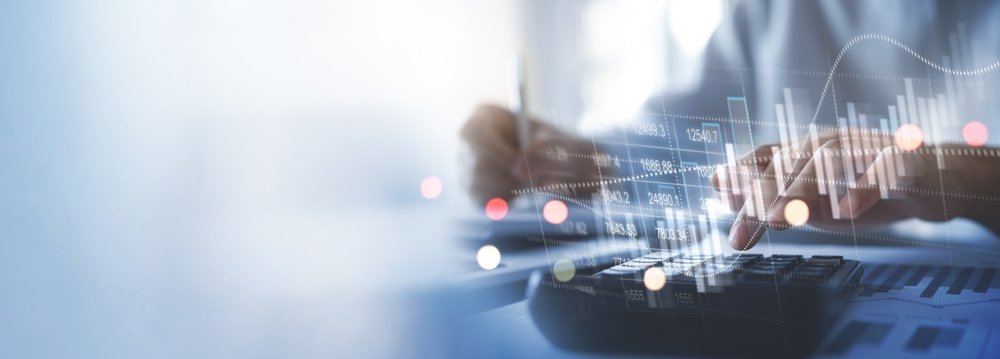
How to Account for Reverse Charge VAT
This article delves into what a reverse charge is, why its used, how to use it and step by step instructions with example sectors where the reverse charge applies.
The reverse charge VAT mechanism is a crucial element within the UK VAT system, particularly when it comes to certain sectors and transactions, especially in the construction industry or when goods and services are purchased across borders. This method shifts the responsibility for reporting VAT from the supplier to the customer (the recipient of the goods or services), helping to mitigate VAT fraud.
In this article, we'll cover:
What reverse charge VAT is
Why it's used
How reverse charge VAT works
Examples of sectors where the reverse charge applies
Step-by-step instructions for accounting for reverse charge VAT
Common mistakes to avoid
What is Reverse Charge VAT?
Reverse charge VAT is a method by which the buyer (customer) of goods or services reports the VAT instead of the seller (supplier). Normally, the supplier charges VAT on the sale of goods or services, collects it from the customer, and then pays it to HMRC. With the reverse charge, the supplier does not charge VAT, and the customer instead declares both the output VAT (sales VAT) and input VAT (purchase VAT) on their VAT return.
The reverse charge system is typically applied:
When the supply of services or goods occurs between two VAT-registered businesses in the UK.
When services or goods are purchased from a supplier located in another country, especially within the EU.
In sectors prone to VAT fraud, such as construction or telecommunications.
Why is Reverse Charge VAT Used?
Reverse charge VAT is designed to combat VAT fraud, particularly "missing trader" fraud, where a supplier collects VAT from the buyer but disappears without paying the VAT to HMRC. The reverse charge mechanism removes the opportunity for this type of fraud by ensuring that the buyer is responsible for reporting the VAT directly to HMRC, eliminating the risk of the supplier absconding with the tax.
In the construction sector, this is commonly referred to as the Domestic Reverse Charge and applies to certain services under the Construction Industry Scheme (CIS).
How Reverse Charge VAT Works
When reverse charge VAT applies, the following process is followed:
The supplier does not charge VAT on the invoice for the goods or services provided to the customer. The invoice will include a note stating that the reverse charge applies.
The customer records the VAT as both output VAT (sales VAT) and input VAT (purchase VAT) on their VAT return. This means that while the customer "charges" themselves VAT on the goods or services, they can also reclaim the VAT (as long as the item is for business use).
Effectively, this cancels out any payment due, resulting in a neutral tax position for the customer, though the VAT must still be recorded.
Sectors Where Reverse Charge VAT Applies
While reverse charge VAT applies broadly across certain transactions, the most notable areas include:
Construction services (Domestic Reverse Charge for construction)
Telecommunications services
Goods and services purchased from suppliers in other EU countries
Wholesale gas and electricity supplies
Step-by-Step Guide to Accounting for Reverse Charge VAT
Identify if the reverse charge applies:
For the construction industry: If both the supplier and the customer are VAT-registered and CIS-registered, and the work falls within the scope of the reverse charge, it must be applied.
For international transactions: If you're purchasing goods or services from an overseas supplier (especially within the EU), the reverse charge will often apply.
Issue the correct invoice (Supplier responsibility):
Do not charge VAT if the reverse charge applies.
Include a note on the invoice stating that the reverse charge applies, such as:
“Reverse charge: customer to account for VAT to HMRC.”
Include the customer’s VAT number and clearly state the net amount due.
Account for the VAT on your VAT return (Customer responsibility):
Box 1: Include the VAT amount you would have been charged as output tax.
Box 4: Include the same VAT amount as input tax if you're entitled to reclaim the VAT.
Box 6: Record the net value of the supply (excluding VAT).
Box 7: Record the net value of the supply for purchases.
Submit your VAT return:
Ensure that both the output VAT and input VAT are recorded correctly to maintain a neutral tax position.
Even though no physical VAT is exchanged, the transaction must be accurately reflected on both sides of the VAT return.
Example: Reverse Charge VAT for Construction
Imagine you're a VAT-registered contractor purchasing construction services from a VAT-registered subcontractor. The value of the services is £10,000. Here’s how the reverse charge VAT would be applied:
The subcontractor invoices you for £10,000 and applies the reverse charge, stating on the invoice, “Reverse charge: customer to account for VAT to HMRC.”
On your VAT return:
Box 1 (Output VAT): £10,000 x 20% = £2,000
Box 4 (Input VAT): £2,000
Box 6 (Net Sales): £10,000
Box 7 (Net Purchases): £10,000
In this case, the £2,000 VAT is both charged and reclaimed, leaving you with no net VAT to pay, but HMRC is fully aware of the transaction.
What Happens if You Don’t Follow the Reverse Charge Rules?
Failing to apply the reverse charge correctly can lead to penalties from HMRC. Suppliers that wrongly charge VAT on reverse charge supplies will be required to correct their invoices, and customers who fail to account for VAT correctly could face penalties for under-reporting VAT.
If you’re uncertain about whether the reverse charge applies to a particular transaction, it’s crucial to consult with HMRC or a tax professional to ensure compliance.
Common Mistakes to Avoid
Not identifying reverse charge transactions: One of the most common errors is failing to realise when the reverse charge should be applied, especially in the construction industry.
Charging VAT when the reverse charge applies: Suppliers must not charge VAT if the reverse charge applies. This is a key area where businesses can get it wrong.
Failing to account for VAT in the VAT return: Customers must ensure they declare both input VAT and output VAT to avoid discrepancies in their VAT returns.
How to Correct Errors in Reverse Charge VAT Accounting
If you realise that you've made an error in your reverse charge VAT accounting, you can make a correction on your next VAT return. If the error exceeds the limits for corrections on a VAT return (usually £10,000 or 1% of turnover), you may need to notify HMRC directly using form VAT652.
Conclusion
The reverse charge VAT mechanism is an important tool in preventing VAT fraud and ensuring that VAT is accounted for correctly between businesses. While it shifts responsibility from suppliers to customers, businesses must ensure they understand when it applies and how to account for it on their VAT returns.
Both suppliers and customers should remain vigilant to ensure they comply with the reverse charge rules. If you're unsure whether the reverse charge applies or how to correctly account for it, seeking advice from HMRC or a tax professional is highly recommended.
By correctly applying the reverse charge and accurately reporting it on your VAT return, you can avoid potential errors, penalties, and complications.

Need Help with VAT?
Our team of tax specialists are here to help you every step of the way, from registering your business for VAT to submitting your tax return. We offer fixed priced accountancy services and handle all of your filing responsibilities leaving you stress free and up to date.
Whether you already VAT registered or thinking of registering, give us a call today for a free non obligated consultation to see how we can assist you.
Strategic Support for Your Business
Explore our comprehensive accountancy packages tailored to your business.
Self Assessment Tax Returns
From £85 per annum
Whether you are in the early stages of trading or considering starting a business, we can provide you a stress free and fixed price service when it comes to self assessment tax returns.
CIS Tax Returns
From £50 per month
Whether you are operating as a contractor or the sub-contractor, our specialist team will take control of all your CIS affairs from start to finish, leaving you to concentrate on your business.
Corporation Tax Returns
From £625 per annum
Are your Management Accounts, Corporation tax return and confirmation statement now due? Let us handle your entire end of year requirements for a fixed, competitive annual fee.
PAYE
From £50 per month
Whether you are a one man band, new start-up or mid-sized business, we have the flexible payroll solution for your business that allows you to pay your employees right, and on time.
VAT Returns
From £90 per submission
Our qualified and experienced team will prepare & submit your all-year-round VAT reporting and returns on your behalf for a fixed price monthly fee, no hidden costs or surprises.
Bookkeeping
From £35 per month
Provide us with your receipts, bank statements and invoices and we will give you reports on a monthly/quarterly basis allowing you to make decisions that grow your business.
